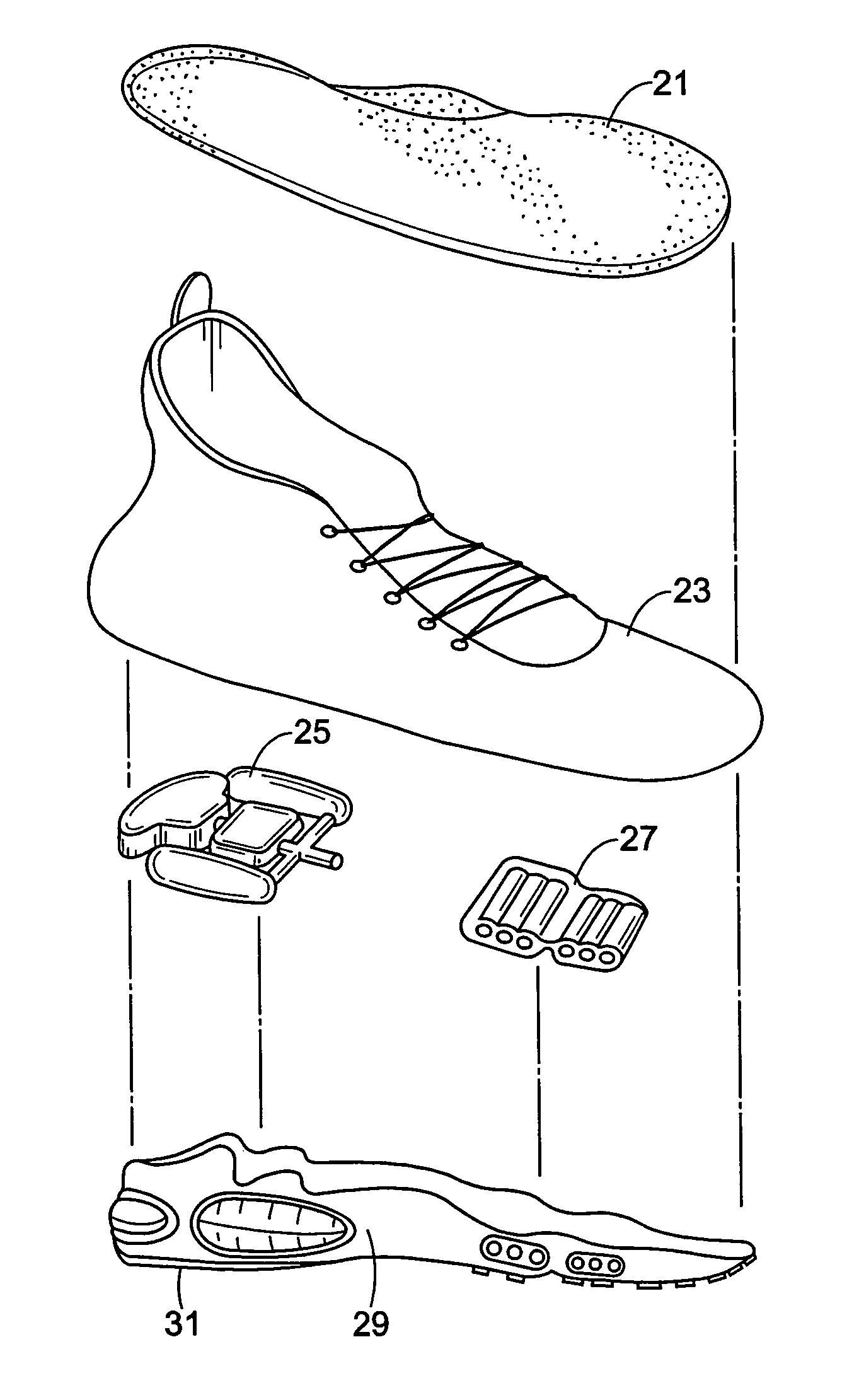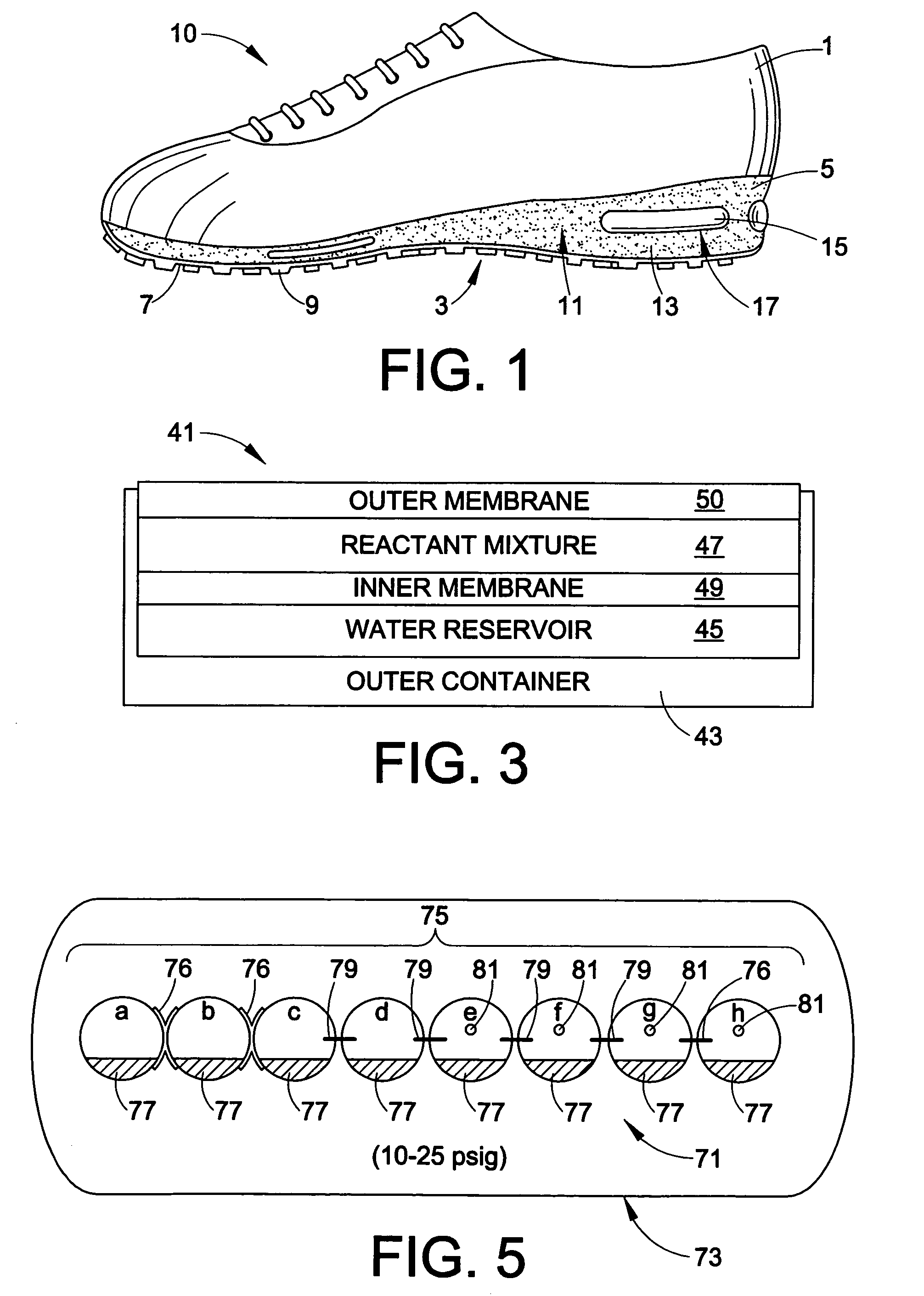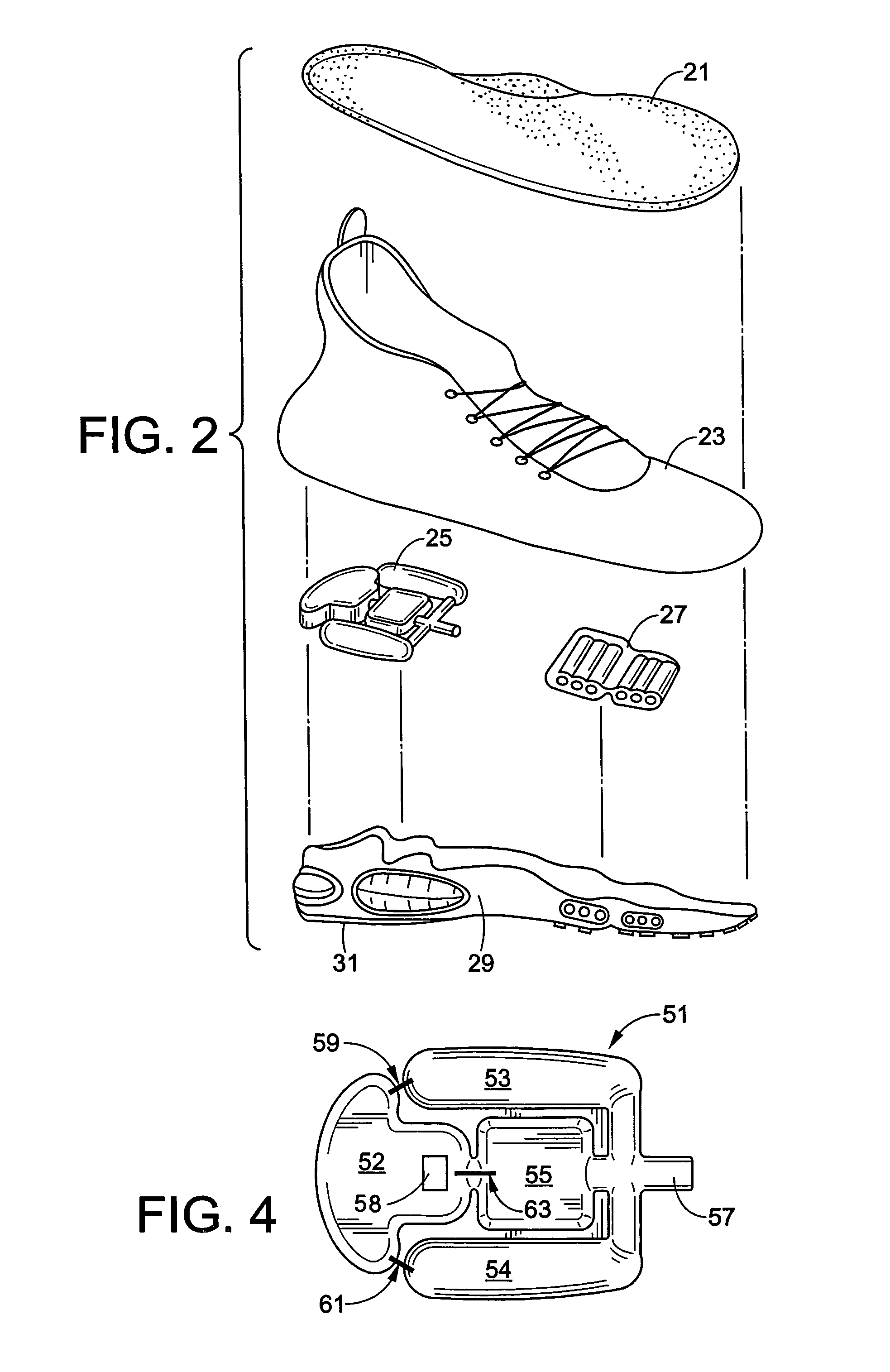Self-inflating cushion and footwear including same
a cushion and self-inflating technology, applied in the field of athletic shoes, can solve the problems of reducing the comfort of wearers,
- Summary
- Abstract
- Description
- Claims
- Application Information
AI Technical Summary
Benefits of technology
Problems solved by technology
Method used
Image
Examples
example 1
Demonstration of Chemical Reaction
[0052]Simple experiments were run to examine the characteristics of one reaction.
[0053]0.5 gm of NH4Cl and 0.6 gm of NaNO2 were placed in 8.7 ml total volume container with H2O to form a 1 M solution of each salt. No bubbles indicating the formation of nitrogen were apparent during the mixing process or at room temperature after one hour. The reaction was heated to around 80° C. at which time bubbles appeared.
[0054]In order to speed the reaction, the reaction was repeated using the same salt concentrations and solution volume but acetic acid was added. A few drops of acetic acid produced some bubbles at room temperature. More acid was added (3 ml) at which time the gas evolved moderately. The experiment was repeated using the same conditions only measuring the amount of gas produced via water displacement. The amount of N2 gas actually displaced was approximately 93 ml total.
Example 2
Demonstration of Chemical Reaction
[0055]The reaction was run in a ...
example 2
Manufacture of Reactive Pellets
[0056]Mixtures were made of equimolar concentration of reactants such that each pellet contained 3×10−3 mols (0.003 mol) of each reactant.
[0057]
Weight per pellet:Sodium nitrite (NaNO2)0.207 gramAmmonium chloride (NH4Cl)0.161 gramTotal0.368 gram
example 3
[0058]Thirteen tests were performed wherein a metallized polyolefin bag was filled with reactant tablets as shown in the following table. Water was included in the form of porous paper having the water absorbed therein. The bags were sealed and observed as described in the table.
[0059]
InflationTestThickness#GasTimeof BagTabletsH2OComments1CO20 hr.01 AlkaDampPressurized to10 daysExplodedSeltzerPaper~3 or 4 psig;exploded2N20 hr.0 days6 of Ex. 22 cc.Fully inflated20 daysLargeDampballoon Paper60 days1.2″3N20 hr.03 of Ex. 22 cc.Fully inflated20 days10%DampballoonPaper60 days .610″4N20 hr.01 of Ex. 21 cc.42 days .325″Damp20% inflatedPaper5N20 hr.01 of Ex. 22 cc.42 days .360″Damp30% inflatedPaper6N20 hr.01 of Ex. 21 cc.42 days10%Damp10% inflatedballoonPaper7N20 hr.02 of Ex. 22 cc.42 days10%DampFully inflated,balloonPapermaybe slightpressure8N20 hr.03 of Ex. 22 cc.42 days .300″Damp10% inflatedPaper9CO20 hr.01 Alka3 cc.30 days .920″SeltzerDampAmbient press;Paperfully inflated10N20 hr.04 of E...
PUM
| Property | Measurement | Unit |
|---|---|---|
| Pressure | aaaaa | aaaaa |
| Length | aaaaa | aaaaa |
| Fraction | aaaaa | aaaaa |
Abstract
Description
Claims
Application Information
 Login to View More
Login to View More - R&D
- Intellectual Property
- Life Sciences
- Materials
- Tech Scout
- Unparalleled Data Quality
- Higher Quality Content
- 60% Fewer Hallucinations
Browse by: Latest US Patents, China's latest patents, Technical Efficacy Thesaurus, Application Domain, Technology Topic, Popular Technical Reports.
© 2025 PatSnap. All rights reserved.Legal|Privacy policy|Modern Slavery Act Transparency Statement|Sitemap|About US| Contact US: help@patsnap.com



